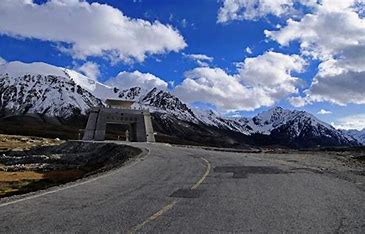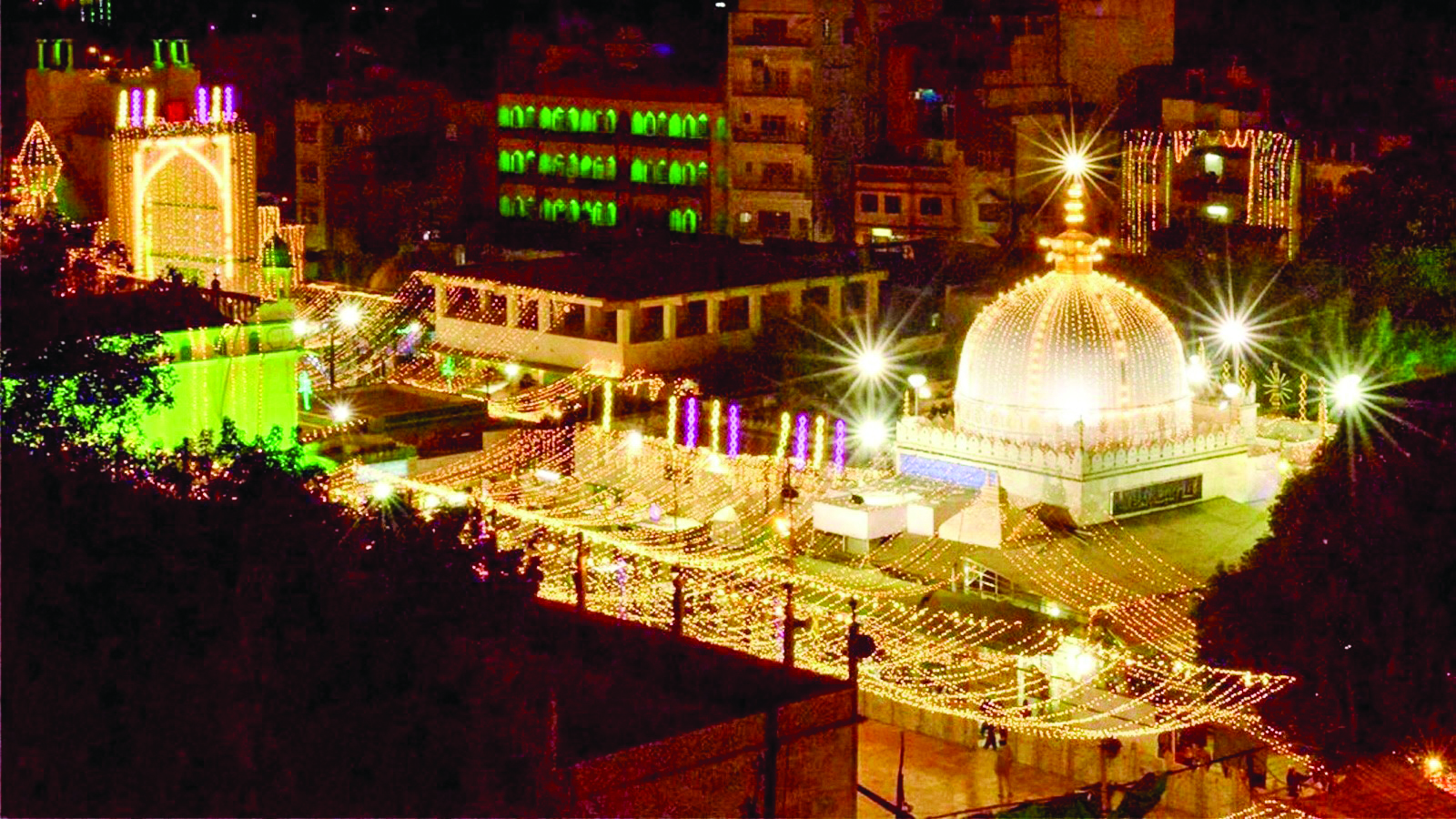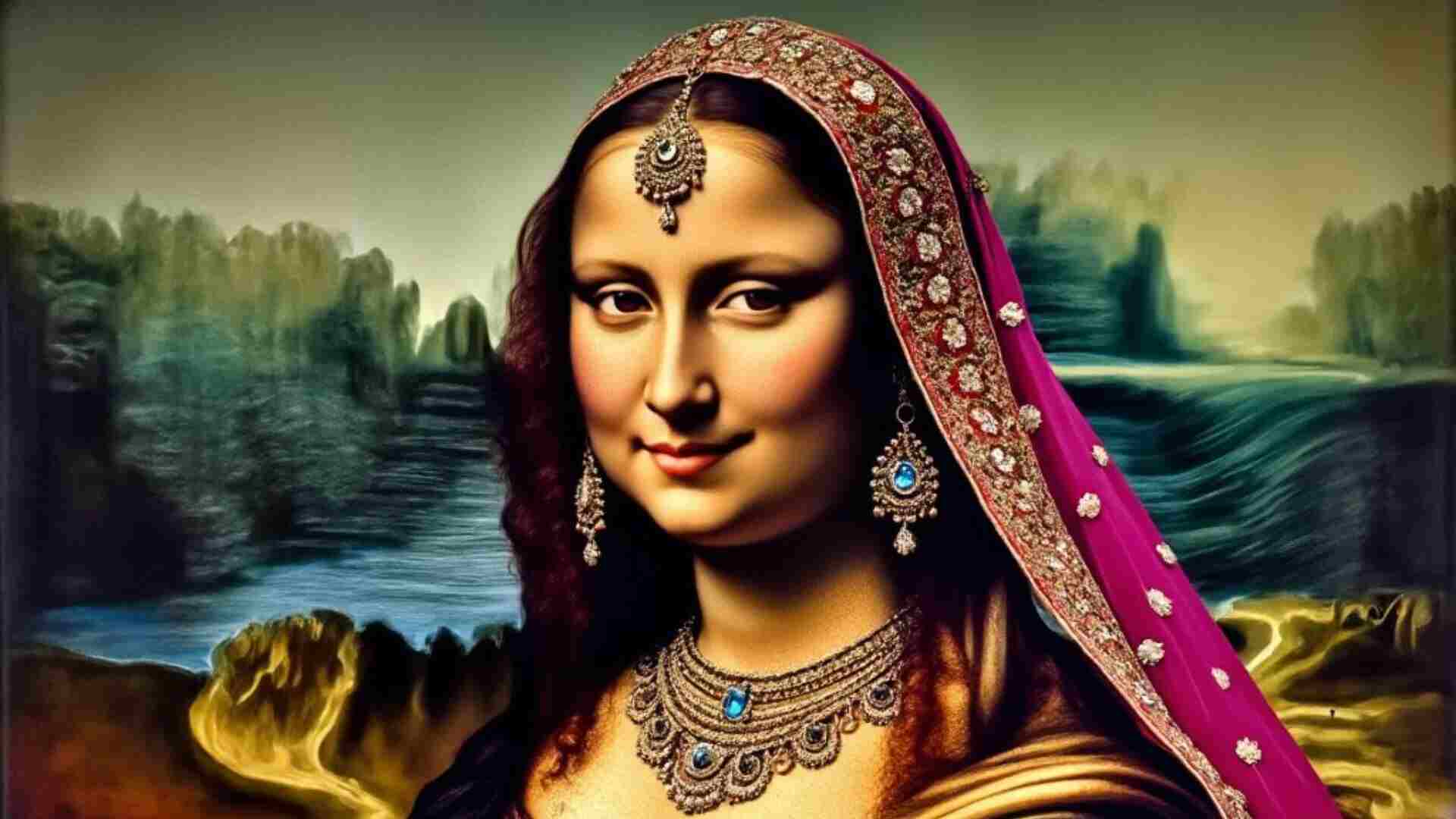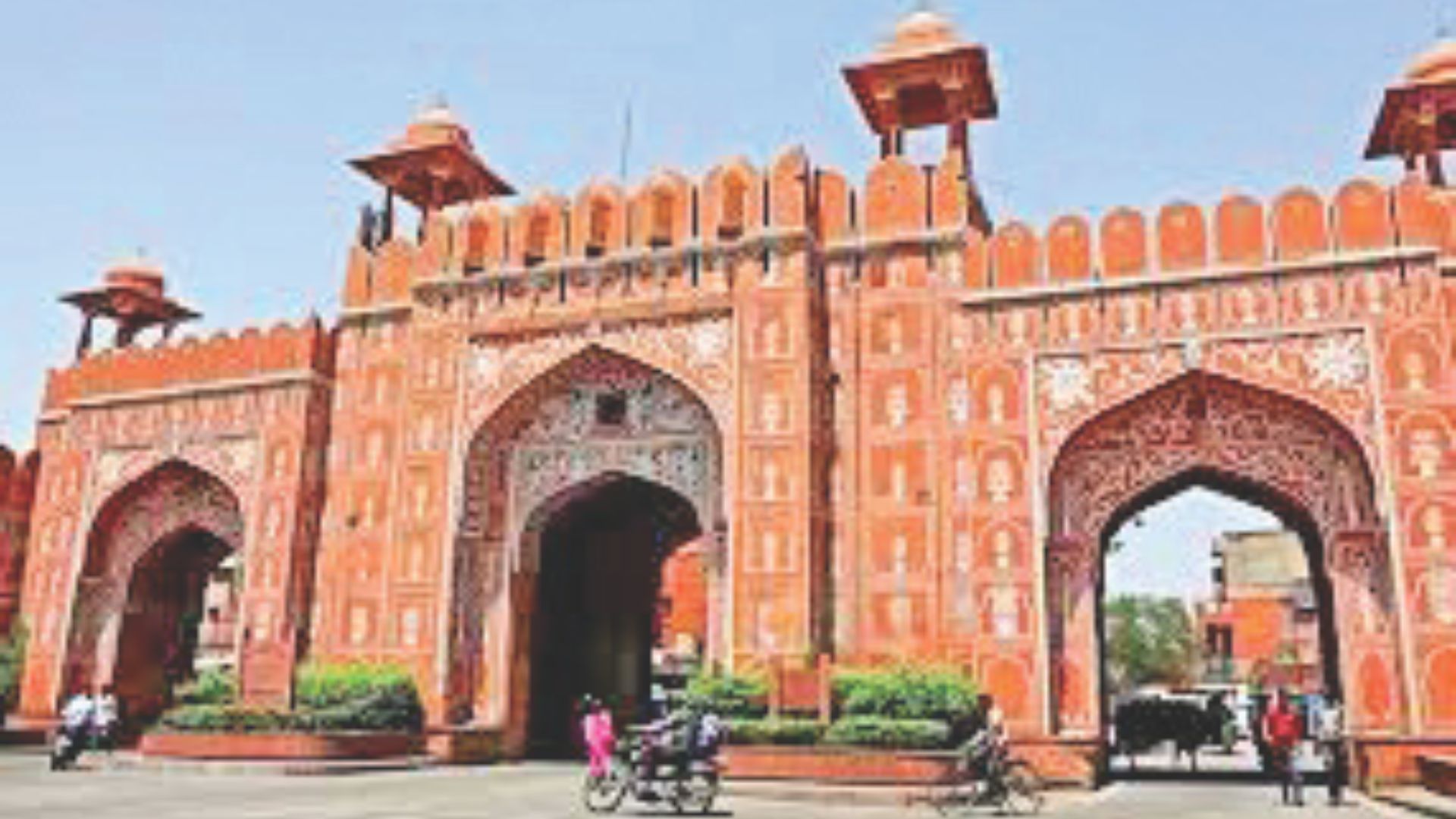
For nearly three centuries, the majestic gates of Jaipur’s walled city have stood as silent sentinels, witnessing the ebb and flow of history through their mighty archways. These four principal gates are Suraj Pol, Chand Pol, Ajmeri Gate, and New Gate. They are more than mere entrances; they are living chronicles of a remarkable past, each telling its own unique story of power, commerce, culture, and architectural brilliance.
The Strategic Vision Behind the Gates
When Maharaja Sawai Jai Singh II planned Jaipur in 1727, he envisioned not just a city, but a fortress of culture and commerce. The gates were strategically positioned following the ancient principles of Vastu Shastra and military defense. Each gate was designed to serve specific purposes, from welcoming royal guests to facilitating trade, while maintaining the city’s security through a complex system of wooden doors, iron spikes, and guard posts.
Suraj Pol, Where Morning Light Meets Royal Might
Standing proudly on the eastern wall of the Pink City, Suraj Pol (Sun Gate) holds a position of unique significance. As the first gate to receive the morning sun’s rays, it was considered highly auspicious in Hindu tradition. The gate’s orientation was no accident; it was precisely calculated to align with the sunrise during important festivals and royal ceremonies.
The architecture of Suraj Pol reflects a fascinating blend of Rajput and Mughal styles. Its massive archway, adorned with intricate floral patterns and geometric designs, leads to a vaulted ceiling decorated with delicate frescoes depicting scenes from Hindu mythology. The gate’s upper chambers, once used by guards, now stand as museums preserving artifacts from the city’s early days.
The Morning Ritual
Even today, locals maintain the tradition of entering through Suraj Pol early in the morning for business or worship, believing it brings prosperity. The surrounding bazaar, famous for its traditional textile shops and jewelry artisans, comes alive with the first rays of sun, continuing a commercial tradition that spans centuries.
Chand Pol, The Moon Gate’s Mystique
Positioned on the western frontier, Chand Pol (Moon Gate) was designed to capture the ethereal beauty of moonlit evenings. This gate has historically been associated with the city’s cultural and artistic life, as it led to areas where musicians, dancers, and artists traditionally resided.
The gate’s architecture features unique acoustic properties; its curved walls and domed ceiling create interesting sound effects that were once used by royal musicians for performances. The intricate latticework (jharokhas) above the gate served both aesthetic and practical purposes, allowing queens and noble ladies to observe festivities while maintaining their purdah.
The Cultural Hub
Today, the area around Chand Pol remains Jaipur’s cultural heart. The narrow lanes leading from the gatehouse lead to numerous workshops where traditional crafts like blue pottery, block printing, and miniature painting continue to flourish. During evening hours, the gate’s surroundings transform into an informal gathering space where local storytellers sometimes share tales of old Jaipur.
Ajmeri Gate, The Gateway of Pilgrims and Traders
The southern Ajmeri Gate, named for its orientation toward the holy city of Ajmer, was historically the busiest of all gates. It served as the main entry point for pilgrims heading to Ajmer Sharif Dargah and traders bringing goods from the rich ports of Gujarat and Maharashtra.
The gate’s design reflects its commercial importance; it features wider passages and stronger fortifications to handle heavy traffic and protect valuable goods. The unique architectural element here is the double gate system, with an outer and inner gate creating a secure space in between, where goods could be inspected and taxes collected.
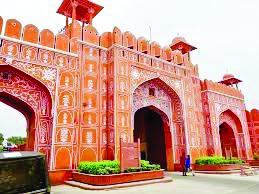
The Trading Legacy
The market around Ajmeri Gate remains one of Jaipur’s most vibrant commercial areas. The shops here specialize in everything from spices and textiles to modern electronics, maintaining their historic role as a commercial hub. The old weighing station (tarazu khana) near the gate has been preserved as a memorial to the city’s trading heritage.
New Gate, The British Influence A Victorian Touch in Pink City
Added during the late 19th century, New Gate represents a fascinating architectural fusion. While maintaining harmony with the older gates’ basic structure, it incorporates distinct British colonial elements in its design. The gate features Gothic arches, cast iron work, and clock tower elements that were popular in Victorian architecture.
The Modern Connection
Unlike its older counterparts, New Gate was designed with modern transportation in mind. Its wider passages and reinforced structure were built to accommodate early motor vehicles. Today, it serves as a symbolic bridge between Jaipur’s historic core and its modern extensions.
Living Heritage, The Gates Today
These historic gates face numerous challenges in the modern era. Increasing traffic, pollution, and urban development pressures threaten their structural integrity. However, recent conservation efforts have brought new hope. The Jaipur Municipal Corporation, in collaboration with UNESCO and local heritage experts, has initiated projects to preserve these monuments while adapting them to modern needs.
Modern Significance
Far from being mere tourist attractions, these gates continue to play vital roles in the city’s life. They serve as important landmarks and navigation points in the crowded old city. Local communities still identify strongly with their respective gates, organizing cultural events and festivals around them.
Cultural Impact and Modern Identity
The four gates have transcended their physical presence to become powerful symbols in local art, literature, and popular culture. They appear frequently in contemporary paintings, photography, and design work by local artists. The gates have also inspired modern architectural elements across Jaipur, as new buildings incorporate traditional gate motifs in innovative ways.
Portals to the Past, Present, and Future
Jaipur’s historic gates stand as remarkable testimonies to the city’s rich heritage. They are not just physical structures but repositories of countless stories, traditions, and memories. As Jaipur evolves into a modern metropolis, these gates serve as crucial reminders of the city’s unique character and historical significance. They continue to inspire new generations while anchoring the Pink City firmly to its magnificent past.
In an age of rapid urbanization, these gates remind us of the importance of preserving our architectural heritage while adapting it meaningfully for future generations. They stand not just as monuments to the past, but as bridges connecting Jaipur’s glorious history to its promising future.
The Lesser Known Features of Jaipur’s Gates
Beyond their imposing facades, Jaipur’s historic gates harbor fascinating secrets that few tourists or even locals know about. Each gate contains an intricate network of hidden passages and chambers that served crucial purposes during times of conflict. At Suraj Pol, a concealed stairway leads to underground chambers that once stored emergency supplies and provided escape routes for the royal family. These passages, some extending several hundred meters, were ingeniously ventilated through cleverly disguised air shafts.
The gates also feature sophisticated medieval security systems. At Ajmeri Gate, deep grooves in the walls once housed massive wooden beams that could quickly seal the entrance. Chand Pol’s upper chambers contain unique acoustic design elements, speaking tubes that allowed guards to communicate secretly between different levels. These tubes, built into the thick walls, still function today, creating an intriguing whisper effect that amazes visitors.
Archaeological excavations near New Gate recently uncovered evidence of an ancient water management system. Channels built into the gate’s foundation collected rainwater and directed it to nearby stepwells, demonstrating the remarkable engineering skills of Jaipur’s original architects. The system included filters made of local stone and charcoal, ensuring clean water supply during sieges.
The gates also played a role in the city’s celestial connections. Astronomical markers built into Suraj Pol’s structure aligned perfectly with the sun during equinoxes, while Chand Pol featured special niches that tracked lunar positions during important festivals. These astronomical elements weren’t just decorative they helped regulate the city’s religious and commercial calendar, proving that these gates served as much more than defensive structures.
These hidden features reveal how Jaipur’s gates were not just military installations but sophisticated pieces of urban infrastructure that helped manage the city’s security, water resources, and cultural life in ways we’re only now beginning to fully understand.

